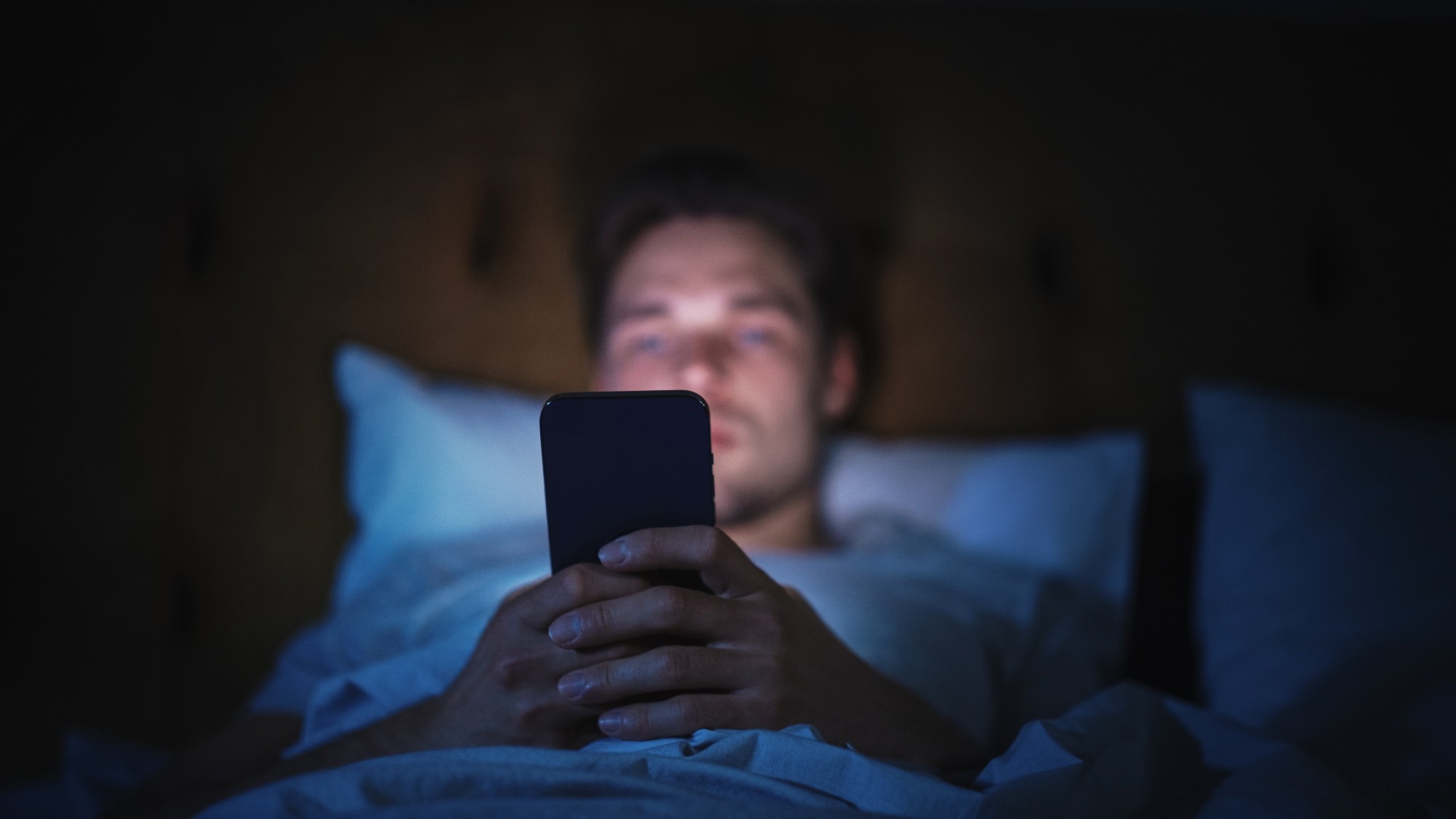Bedtime screen time cuts sleep by nearly an hour a week and boosts the risk of restless nights, especially for night owls.
 Study: Electronic Screen Use and Sleep Duration and Timing in Adults. Image Credit: Gorodenkoff / Shutterstock.com
Study: Electronic Screen Use and Sleep Duration and Timing in Adults. Image Credit: Gorodenkoff / Shutterstock.com
A recent JAMA Network Open study examines how electronic screen use before bed affects sleep among adults.
How does light affect sleep quality?
Although adequate and high-quality sleep is crucial for good health, average sleep duration and quality have deteriorated in the past several decades. In fact, one recent study revealed that approximately one-third of adults do not meet recommended guidelines to sleep at least seven to nine hours each night.
The eyes contain photosensitive cells in the retina, which is extremely sensitive to light. The absence of light at night increases the secretion of melatonin, a hormone that is essential for inducing the feeling of sleepiness. Thus, exposure to bright light before sleep delays melatonin secretion, thereby increasing sleep latency and disrupting circadian rhythm.
Smartphone use and chronotype
Smartphone devices use light-emitting diodes (LEDs) for screen illumination. The light intensity in these devices generally peaks in the 450 nm range, which corresponds to the blue spectrum of light that has been shown to negatively affect human sleep. As a result, smartphone users often experience sleep disruptions due to habit of looking at device screens before sleep.
To date, most studies have evaluated the effects of electronic screen use on sleep based on adolescent and young adult study participants, partly because this population more frequently uses new technologies. Since adolescents are less sensitive to light-induced sleep disruptions, it is crucial to investigate the differential impact of electronic screen use before sleep among individuals of all ages.
About the study
The researchers of the current study conducted a cross-sectional analysis on data obtained from the American Cancer Society Cancer Prevention Study-3 (CPS-3) to investigate whether electronic screen use before sleeping affects sleep outcomes. The CPS-3 study cohort comprised both men and women from 35 U.S. states and Puerto Rico.
To measure electronic screen use before sleep, study participants were asked to self-report their sleeping patterns. For example, study participants were asked how often every week they watch or read on an electronic screen, such as a smartphone, laptop, or tablet, but not TV.
Except for weekends and non-workdays, study participants reported the average time at which they tried to fall asleep and wake up. Sleep duration was calculated in minutes, with sleep quality assessed based on Pittsburgh Sleep Quality Index.
Chronotype was determined using the Horne-Östberg Morningness-Eveningness Questionnaire. The effect of electronic screen use on sleep was assessed based on prevalence ratios (PRs) using a Poisson regression model.
Study findings
The current study included 122,058 individuals with a median age of 56 years. Over 89% of study participants were White, whereas 58% and 80% completed a college degree and were women, respectively.
About 58% of study participants were classified as morning chronotypes, with less than 6% reporting using an eye mask while sleeping. Approximately 81% of the study cohort reported that their bedrooms were dark enough that they could not see across the room.
Over 41% of the study cohort reported the use of an electronic screen every night of the week before sleeping. The remaining study participants either occasionally used electronic screens before sleep or did not use them at all. As compared to the overall population, non-users were more likely to be male or at least 60 years of age.
Individuals who engaged with electronic screens daily were more likely to achieve less than the recommended sleep duration. Age- and sex-adjusted models revealed that, as compared to non-users, daily screen users slept a mean of 7.78 fewer minutes. Daily electronic screen users also reported 19.01 minutes later bedtimes on workdays, with these durations fluctuating on weekends and non-workdays.
Daily electronic screen use was associated with a 26% increased risk of self-reported poor sleep quality. Fully adjusted models revealed that daily electronic screen users went to bed 18.82 and 19.69 minutes later on workdays and non-workdays, respectively. As compared to study participants who did not report screen time, 33% of those who used electronic screens daily reported poor sleep quality.
Individuals with the morning chronotype went to sleep 34 minutes earlier on workdays and non-workdays. However, those with evening chronotypes reported later bedtimes.
Conclusions
Daily electronic screen use before sleep was associated with 48 fewer minutes of sleep each week. As compared to those with morning chronotypes, individuals with later chronotypes experience poor sleep quality and duration. In the future, additional research is needed to understand the underlying mechanisms through which screen use disturbs sleep.
Journal reference:
- Zhong, C., Masters, M., Donzella, S. M., et al. (2025) Electronic Screen Use and Sleep Duration and Timing in Adults. JAMA Network Open 8(3):e252493. doi:10.1001/jamanetworkopen.2025.2493